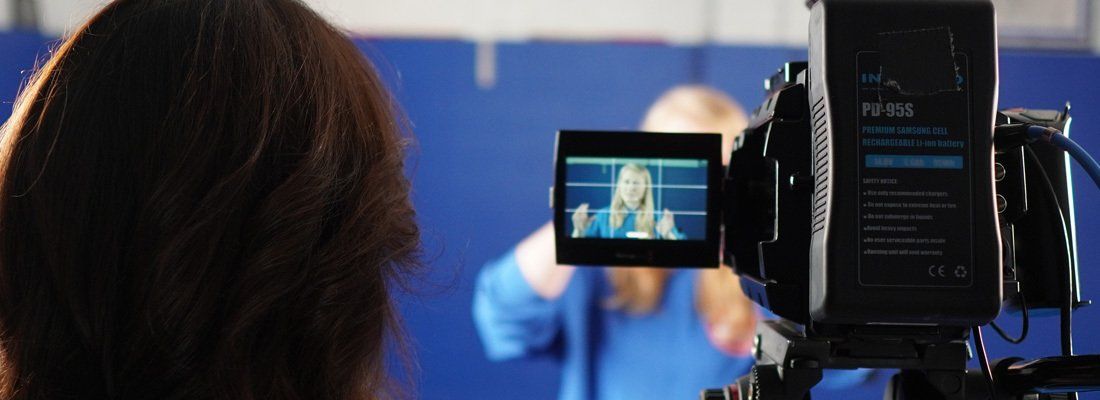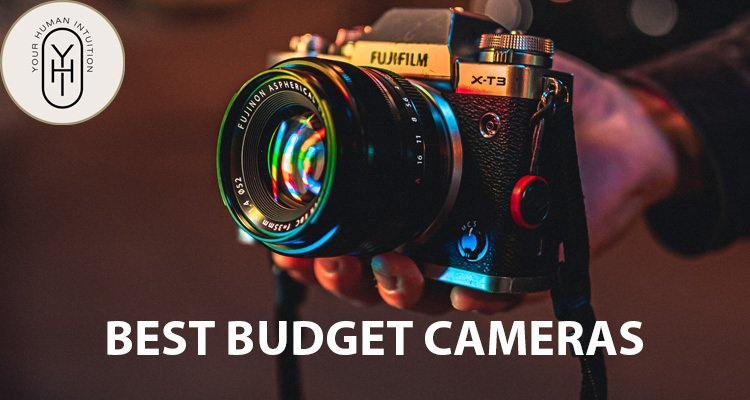What is the 1.66:1 Aspect Ratio?
As a modern filmmaker, the aspect ratio is one of your most important cinematographic tools. Many directors still make use of the classic 1.66:1 aspect ratio today to create a specific effect. One of your biggest challenges as a director is deciding if and when this ratio is right for your project.
The aspect ratio of an image or video is the ratio of image width to image height. A wide range of aspect ratios are used for taking photographs and for filming videos. Common aspect ratios used for still images include
4:3, 3:2, and 16:9. Common aspect ratios used for filming video include 1.85:1, 2.39:1, 4:3, and 16:9.
How Do You Select the Aspect Ratio?
The fundamental question related to the choice of aspect ratio is: how do you want to present the image?
Some aspect ratios are synonymous with cinema, some with television, and some with home video. Some aspect ratios take us back to a specific era. They are often used by filmmakers to immerse the audience in the feel of a particular time period. A striking example is The Grand Budapest Hotel, a film directed by Wes Anderson. The aspect ratio changes during the film to match the one that was commonly used for filming movies during the represented time periods.
What are the Differences Between Wide and Narrow Aspect Ratios?
Wider aspect ratios are used to capture wide landscapes and grand vistas. This technique is quite visible in the epic Lord of the Rings movies. Wider aspect ratios are utilized to create a wide sense of space. However, wider ratios are best suited to picturesque landscapes. Otherwise, shots done in this aspect ratio contain a lot that would be considered uninteresting, having an undesirable effect on the audience.
On the other hand, narrower aspect ratios create a narrow sense of space. The use of this ratio leads to a sense of hyper-focus and high tension. Compared to wider ratios, the number of characters that can fit into narrow aspect ratios is also reduced.
When it comes to selecting the best ratio for your film, you clearly have a lot to consider. The aspect ratio has to be carefully chosen, keeping in mind the story that you are telling through the visual medium of film.
What is the 1.66:1 Aspect Ratio?
The 1.66:1 aspect ratio is also known as the 5:3 ratio or the European widescreen standard. The first three James Bond movies were shot in 1.66:1. Many classic movies, including On the Waterfront (1954), A Clockwork Orange (1971), and Blue Valentine (2010), were also shot in 1.66:1.
1.66:1 ratio was the original gold standard of cinematography and was the default aspect ratio in movies filmed from the mid 20th century and forward. Many directors feel this aspect ratio has a natural beauty and nostalgia to it. It is especially useful for extreme closeup shots and impressive landscape images.
What is Super 16 mm Film?
Some of the popular gauges of film include 8 mm, 35 mm, and 16 mm. The Super 16 mm film is a variant of the classic 16 mm film. It has a native 1.66:1 aspect ratio. The Super 16 mm film format has been used for many classic genre films from the 1980s and 1990s. It has also found popular use in countless commercials and TV series and features.
When Should You Use the 1.66:1 Aspect Ratio?
Considered a non-standard format, the 1.66:1 ratio is not widely used today. However, out of the box thinking can often lead to highly innovative and creative filmmaking. Non-standard formats like the 1.66:1 have been used by filmmakers as a tool to enable them to create unique ways to film shots and tell stories.
Since one of the strengths of 1.66:1 is its powerful closeups, this aspect ratio allows for better use of vertical space. The increased height ensures your actors’ heads remain in the shot and the additional vertical framing enables you to maximize the element of surprise.
Often the decision to use 1.66:1 comes down to your own unique vision for your film. Your natural instincts will lead you to the right aspect ratio to achieve your desired effect.
What are Some Popular Movies Shot in 1.66:1?
There are many popular movies filmed in the 1.66:1 aspect ratio. These include:
- Jackie (2016)
- Blue Valentine (2010)
- Mulan (1998)
- Apollo 13 (1995)
- Full Metal Jacket (1987)
- New York, New York (1977)
- The Man with the Golden Gun (1974) (a James Bond movie)
- A Clockwork Orange (1971)
- Dr. No (1962) (a James Bond movie)
- On the Waterfront (1954)
4:3 vs 1.66:1 Aspect Ratio—Which One is the Best for My Project?
The 4:3 or 1.33:1 aspect ratio was the standard for early motion pictures. It was also the principal format used for TV until approximately 20 years ago. This ratio has a certain nostalgic appeal and is now undergoing a resurgence for this very reason.
The 4:3 aspect ratio is closer to a square while the 1.66:1 aspect ratio is closer to a rectangle.
Here are some of the strengths and weaknesses of 4.3:
A nostalgic “feel”
Often invoking feelings of nostalgia in a viewer, 4:3 is reminiscent of the golden age of Hollywood. Viewers associate this aspect ratio with some of their beloved TV classics from their childhood and even cherished B movies filmed in the late 80s and early 90s.
Excellent for framing faces
4.3 is an easy medium for capturing effective closeup shots. Tight closeups are easily achieved with 4.3. However, since some of the height and width is lost with this type of aspect ratio, you may also lose some of your image when panning out of a shot.
Well-suited to mobile devices
One of the benefits of narrower ratios like the 4:3 is that they are better suited to mobile devices such as smartphones and tablets.
Poor format for landscape images
Because the width of 4.3 is not as substantial as that of 1.66:1, it is far more difficult to film landscape shots effectively.
By comparison, 1.66.1 offers the following advantages and disadvantages:
An indie feel
1.66:1 has more of an indie feel. Most commonly utilized in Europe in the 70s and 80s, this aspect ratio was also the choice for documentaries and independent films. It has become synonymous with such projects as arthouse flicks, hard-hitting documentaries, and 90s independent films.
Easy framing of shots
Many directors feel that 1.66:1 is a very easy aspect ratio to worth within, indicating it is not possible to capture a bad shot using this tool. 1.66:1 offers very little blank space. The camera readily focuses on your subject, ensuring you have very little negative space in each frame.
Well suited to TV and cinema
Wider aspect ratios like the 1.66:1 are much better suited to TV and cinema.
Whether you opt to for 4.3 or 1.66:1, you will end up with an entirely different look and feel to your completed project. Your audience may not be able to articulate the difference made by your choice of aspect ratio, but they will definitely notice it.
What are Some Popular Movies Shot in 4.3:1?
Some of the most popular films shot in 4.3:1 that you might recognize are:
- The Grand Budapest Hotel (partially) (2014)
- Wuthering Heights (2011)
What is the 1.78:1 Aspect Ratio?
The 1.78:1 or 16:9 aspect ratio is the widescreen TV standard that is used for HDTV programming. Since it is the de-facto standard for TV, most filmmakers prefer to use this aspect ratio for TV and digital broadcasts and prefer not to use it for film projects. Other than documentaries or made-for-TV projects, the number of feature films that have used this standard is low in number.
What are Some of the Most Popular Movies Shot in 1.78:1?
Among most well-known movies shot in 1.78:1 are:
- The Man from Earth (2007)
- War of the Worlds (2005)
- As You Like It (2006)
What is the 2.39:1 Aspect Ratio?
The 2.39:1 aspect ratio is the one that is most commonly used for cinema. Initially, this ratio was achieved by the use of anamorphic lenses on 35 mm film. Today, this aspect ratio is achieved by cropping movies that are shot in a narrower aspect ratio.
This aspect ratio can be challenging to film in, requiring a greater amount of experimentation to achieve the ideal shot. Since 2.39.1 offers a more substantial width, you are then faced with the problem of trying to fill in or eliminate more camera space.
What are Some Popular Movies Shot in 2.39:1?
Some movies you might know that were filmed in 2.39:1 include:
- Bad Boys for Life (2020)
- Artemis Fowl (2020)
- Blade Runner 2049 (2017)
- Passengers (2016)
- Live Free or Die Hard (2007)
How Important is the Right Aspect Ratio for My Viewers?
Even though the general audience is not knowledgeable about the technical facets of different aspect ratios, they are experienced TV and movie viewers. They may not feel your aspect ratio choice on a conscious level, but they detect the difference your selection has made on their viewing experience.
You, as a filmmaker, have to make a conscious and well-thought out choice to ensure your chosen aspect ratio is suitable for your medium. This aspect ratio should also communicate the “feel” you are looking for to promote the most effective and enjoyable experience for your viewer. The aspect ratio you select will differ depending on whether you are filming your project for viewing on a TV, in a theatre, or on a mobile phone.
The correct aspect ratio could make your movie. But the converse is also true: the wrong one might break it.



